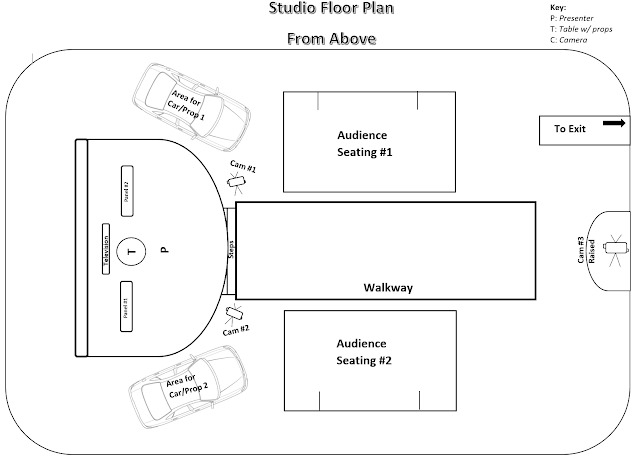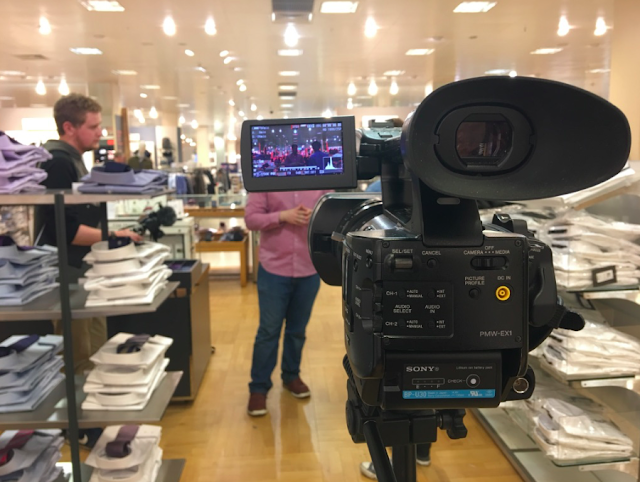Contextual Research | Short Film Review: 2:20
2:20 Virgin Media Short 2011 Review [CLICK HERE TO VIEW]
2:20 actually won the Virgin Media short film of the year competition for 2011, and by doing so caught my attention as something with a lot of potential - having viewed the film several times I decided to review it for the purposes of picking apart the techniques the director utilises, and the ways in which he conveys his narrative - remaining interesting and engaging throughout.
Narrative
The story begins with a young man sitting at a coffee shop, we as an audience do not come to learn any details about this character's identity for the duration of the short. After checking a text from his girlfriend, his phone reads 2:20am, referencing the title of the short film itself. The camera immediately cuts to some uncomfortable and obscure shots of the back of an old woman, pushing a shopping trolley.
As the woman leaves her specs on the side of the table, we quickly discover that the glasses belonging to the mysterious woman reveal crucial insight into the date and times of people's deaths, deaths that are yet to occur. Upon seeing the time of his own mortality through the reflection of a car window, our character is struck brutally by an oncoming bus. Although the film cuts to black before the initial impact, naturally shocking the viewer with an abrupt ending.
Character Design
The young man featured throughout the film is the protagonist, however remains un-named. Despite his initial intentions for the evening, his night is altered when he encounters the strange old woman who gave him the glasses. The same glasses which ultimately cause the man to die, this leads to an interesting internal debate filled with 'What if's and but what's' since, surely if his predetermined date and time of death was at that exact moment, then he would've been killed somehow irrespective of him standing in the road - This leads to a fascinating ethical debate between viewers, and debate is always good within media.
One can tell from the way the old woman is introduced that she represents something other than friendliness. I'd like to think the woman is symbolic for 'death' itself, the pointing of the finger is the act of 'marking someone for death' - a trope that has been associated and adapted into the portrayal of 'The Grim Reaper' many times in the past, with the glasses acting as the reaper's scythe.
Editing
Interestingly, this short film consists almost entirely of straight cuts, the only time when this doesn't occur is at the beginning where we fade in from black. Although the 180 degree rule doesn't apply much to 2:20, the shots often switch between depicting the character on the left side of the screen to the right, adding to the disjointed, uneasy feeling the audience is expected to ascertain.
There are also small examples of match-on action used when the glasses are being picked up, as-well as when the man crosses the street, although they're rather quick and hard to spot - therefore acting as a testament to how well edited the actual film is.
Cinematography
2:20 seems to possess a respectable standard of cinematography. For me the most interesting shots are those which depict the first-person perspective of the young man looking through the glasses. These shots help empathise and understand the power the glasses truly possess. Seeing something physically grounds it more into reality.
Furthermore, there is also canted shots to highlight the ambiguity of the strange old woman as she wanders along the street. Coupled with a large variety of close-up shots in order to accurately convey the character's micro-emotions.
Sound
Throughout the entire short film there is a piece of music being played in the background, this is there for two reasons; first of all it prevents there from being any moments of silence, therefore making moments where the music stops more impactful and much more noticeable. It also helps ground the tone of the short film as this gritty, serious view on the world. This is also reflected in the build and pace of the music, growing faster and louder as we approach the film's climax.
Other sounds include diegetic use of sirens, background conversations and sounds of traffic in order to build the sense of ambience, thus making the atmosphere feel much more 'real' and 'alive'. Similarly there are various sound effects such as beeping and ticking in order to authenticate the existence of the glasses within the world, and ultimately give them a bit of life.
Conclusion
So... all in all, I feel that 2:20 explores a unique concept that challenges the audience to question what they know from start to finish. The idea that we all exist with a set date and time of death pre-determined for us is terrifying, and seeing that realised in a very real, somewhat macabre way is fascinating. Despite not giving us an explanation as to who exactly the mysterious woman is, and why she had the glasses - we're left to our own devices and told to figure it out ourselves.
2:20 actually won the Virgin Media short film of the year competition for 2011, and by doing so caught my attention as something with a lot of potential - having viewed the film several times I decided to review it for the purposes of picking apart the techniques the director utilises, and the ways in which he conveys his narrative - remaining interesting and engaging throughout.
Narrative
The story begins with a young man sitting at a coffee shop, we as an audience do not come to learn any details about this character's identity for the duration of the short. After checking a text from his girlfriend, his phone reads 2:20am, referencing the title of the short film itself. The camera immediately cuts to some uncomfortable and obscure shots of the back of an old woman, pushing a shopping trolley.
As the woman leaves her specs on the side of the table, we quickly discover that the glasses belonging to the mysterious woman reveal crucial insight into the date and times of people's deaths, deaths that are yet to occur. Upon seeing the time of his own mortality through the reflection of a car window, our character is struck brutally by an oncoming bus. Although the film cuts to black before the initial impact, naturally shocking the viewer with an abrupt ending.
Character Design
The young man featured throughout the film is the protagonist, however remains un-named. Despite his initial intentions for the evening, his night is altered when he encounters the strange old woman who gave him the glasses. The same glasses which ultimately cause the man to die, this leads to an interesting internal debate filled with 'What if's and but what's' since, surely if his predetermined date and time of death was at that exact moment, then he would've been killed somehow irrespective of him standing in the road - This leads to a fascinating ethical debate between viewers, and debate is always good within media.
One can tell from the way the old woman is introduced that she represents something other than friendliness. I'd like to think the woman is symbolic for 'death' itself, the pointing of the finger is the act of 'marking someone for death' - a trope that has been associated and adapted into the portrayal of 'The Grim Reaper' many times in the past, with the glasses acting as the reaper's scythe.
Editing
Interestingly, this short film consists almost entirely of straight cuts, the only time when this doesn't occur is at the beginning where we fade in from black. Although the 180 degree rule doesn't apply much to 2:20, the shots often switch between depicting the character on the left side of the screen to the right, adding to the disjointed, uneasy feeling the audience is expected to ascertain.
There are also small examples of match-on action used when the glasses are being picked up, as-well as when the man crosses the street, although they're rather quick and hard to spot - therefore acting as a testament to how well edited the actual film is.
Cinematography
2:20 seems to possess a respectable standard of cinematography. For me the most interesting shots are those which depict the first-person perspective of the young man looking through the glasses. These shots help empathise and understand the power the glasses truly possess. Seeing something physically grounds it more into reality.
Furthermore, there is also canted shots to highlight the ambiguity of the strange old woman as she wanders along the street. Coupled with a large variety of close-up shots in order to accurately convey the character's micro-emotions.
Sound
Throughout the entire short film there is a piece of music being played in the background, this is there for two reasons; first of all it prevents there from being any moments of silence, therefore making moments where the music stops more impactful and much more noticeable. It also helps ground the tone of the short film as this gritty, serious view on the world. This is also reflected in the build and pace of the music, growing faster and louder as we approach the film's climax.
Other sounds include diegetic use of sirens, background conversations and sounds of traffic in order to build the sense of ambience, thus making the atmosphere feel much more 'real' and 'alive'. Similarly there are various sound effects such as beeping and ticking in order to authenticate the existence of the glasses within the world, and ultimately give them a bit of life.
Conclusion
So... all in all, I feel that 2:20 explores a unique concept that challenges the audience to question what they know from start to finish. The idea that we all exist with a set date and time of death pre-determined for us is terrifying, and seeing that realised in a very real, somewhat macabre way is fascinating. Despite not giving us an explanation as to who exactly the mysterious woman is, and why she had the glasses - we're left to our own devices and told to figure it out ourselves.







Comments
Post a Comment